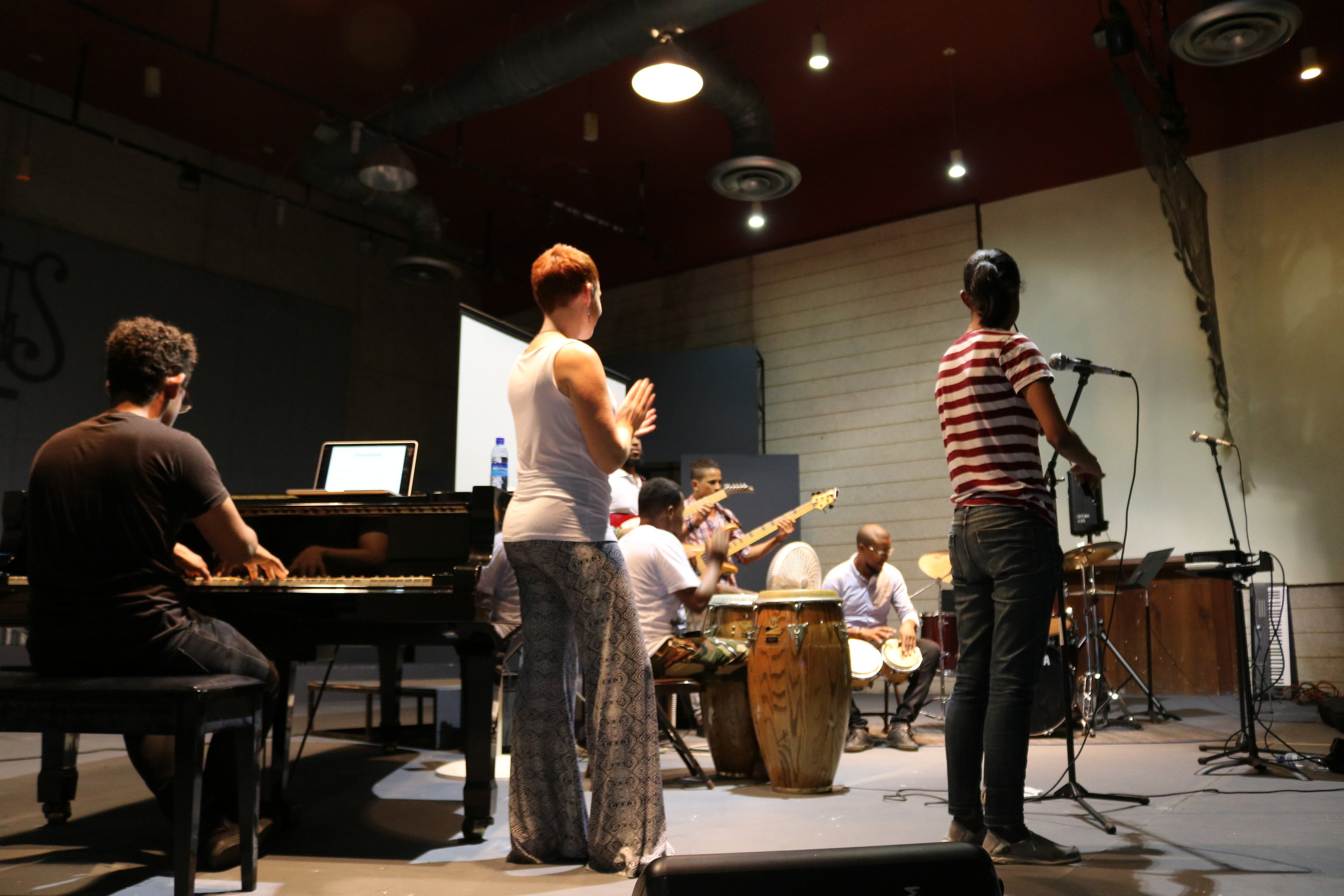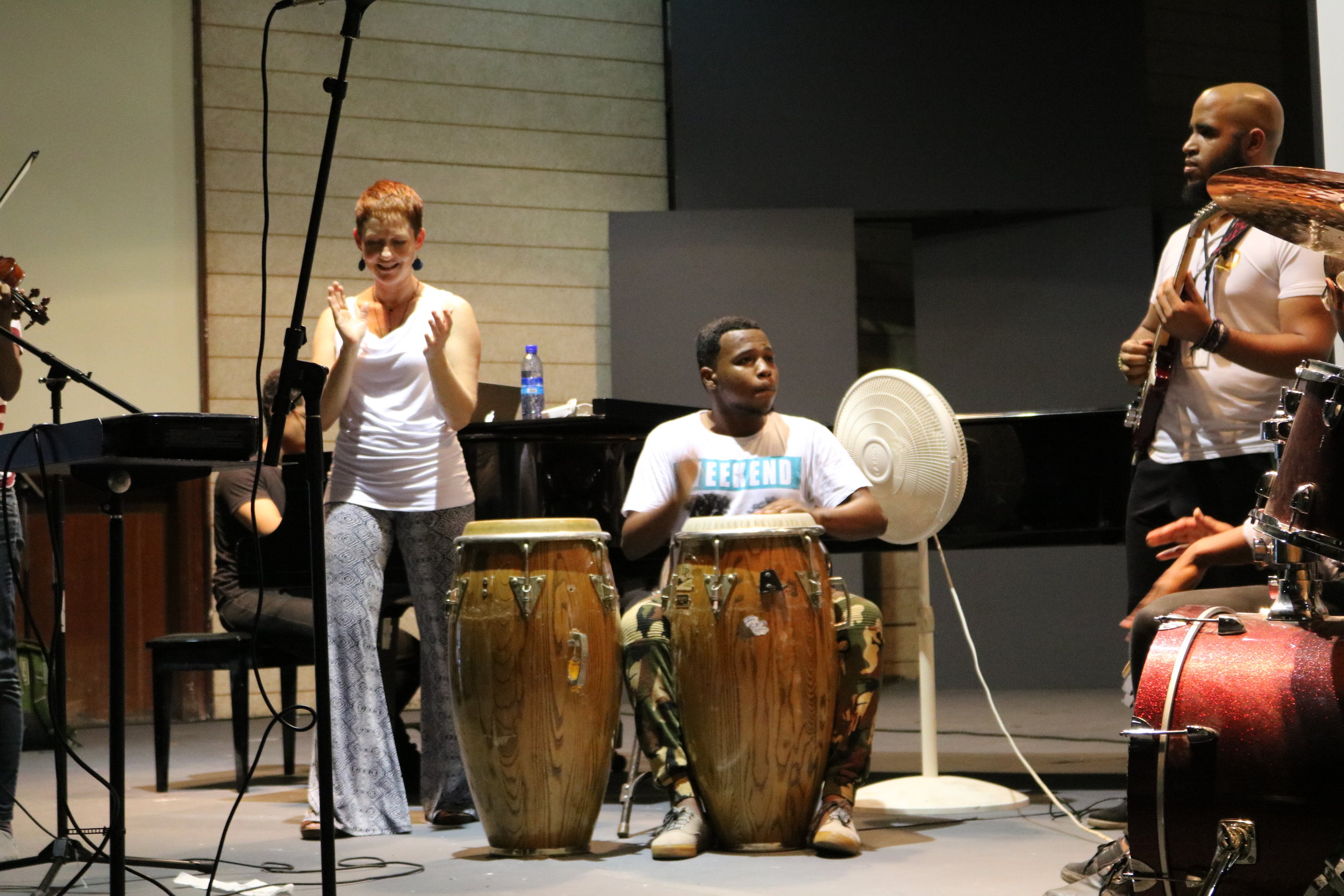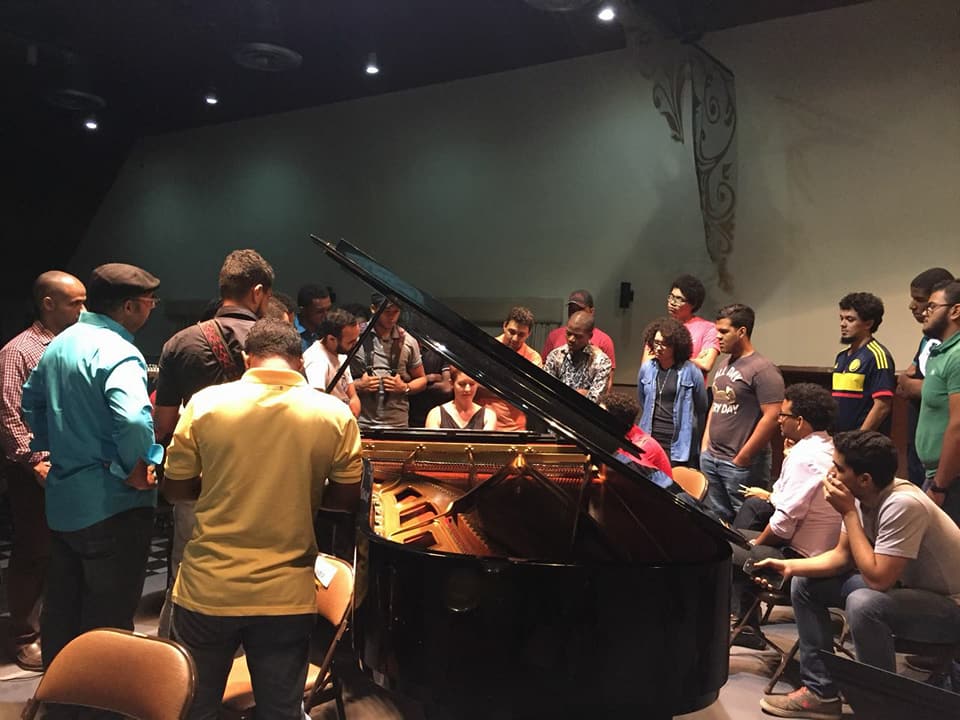



Improvising With Clave
Musicians who seek to play Latin jazz with more rhythmic authenticity often receive glib advice from veteran players: "Just listen to the clave!" To musicians with years of experience, playing with a command of the style probably is as simple as listening to the clave. However, for the uninitiated, merely hearing the five hits that make up the clave pattern is not always a revelation.
Analyzing examples from the repertoire, participants develop an awareness of common rhythmic tendencies of clave-based improvisation. Participants apply several two-bar phrases that work with the clave to a variety of harmonic settings in order to internalize clave phrasing on their instruments.
Five Tools for Crafting a More Vibrant Piano Solo
The evocative Cuban piano style that developed in the 1950s and 1960s set the standard for piano improvisation in Latin jazz today. Exhilarating performances by Chucho Valdés, Michel Camilo, Rubén González (Buena Vista Social Club) and others have lured many jazz pianists to further explore the rich tradition of Cuban piano improvisation. We will break down five classic elements of this recognizable style through transcription analysis and performance:
Octaves
3rds & 6ths
Montunos
Polyrhythms
Block Chords
Analyzing transcriptions of exemplary solos by Lilí Martínez, Pedro “Peruchín” Justiz, Bebo Valdés, Eddie Palmieri, Papo Lucca, and Manolito Simonet provides insight into how each of these artists achieve their own particular balance of these pervasive stylistic elements. Links to all transcriptions will be provided.
Chord Tone Soloing
At the outset, one of the most challenging aspects of improvising over a tune is keeping our place in the form. As we gain experience playing over standard song forms, we strive to create rhythmically varied, singable lines that work over the harmony. With even more experience, we might seek to create lines based on an expanded interpretation of the original harmony. Regardless of level, what can we practice in order to be spontaneous without getting lost?
Chord tone soloing allows us to gradually increase the amount of creativity we release into the process of improvising while ensuring harmonic and formal accuracy. Participants perform deceptively simple two-measure rhythmic exercises, using specific chord tones, over a standard song form in order to internalize the sound of the progression.